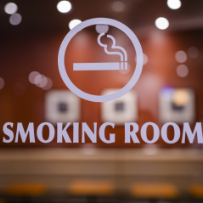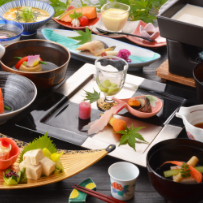Japanese Manners and Customs
Manners and customs unique to Japan to be aware of when traveling to Japan
-
Shrines & Temples


Shrines and temples are based on different religions. Shrines are associated with Shintoism and temples with Buddhism. Shrines and temples have different manners of worship.
At a shrine, take a bow at the entrance facing the main hall where the god is enshrined. Then at the water purification basin, cleanse your hands and rinse your mouth using a ladle. Upon reaching the main building of the shrine, rattle the shinto bell, put an osaisen (offerings of money) into the offertory box, then pray (bowing twice, clapping twice, then bowing once).
At a temple, take a bow in front of the Sanmon gate, then step across the threshold of the gate without stepping on it. Like at a shrine, cleanse your hands and rinse your mouth at the water purification basin. At the main building of the temple, put an osaisen into the offertory box, join your hands in prayer and light an incense. When you leave through the gate, join your hands again and take a bow facing the temple. -
Onsen (Hot Spring)


Shampoos, rinses, body soap, etc. are usually available in the bathhouses. People with long hair should tie their hair up before stepping into the bathtub to avoid getting their hair into the tub water. Please do a "kakeyu" (pouring bathwater on your body to clean and acclimate your body to the bath temperature) before bathing. Towels are not to be taken into the bathtub. Please wipe your body before leaving for the dressing room.
Taking photos in the hot springs and dressing rooms is strictly prohibited. Please avoid drinking alcohol before bathing. Some facilities may refuse bathing for people with tattoos. -
Smoking


Smoking while walking and littering of cigarettes is strictly prohibited. Cigarettes should be smoked in smoking facilities. In principle, no-smoking is enforced in places used by many people such as buses, trains and public facilities. Violators may be fined.
-
Meals


In Japanese cuisine, it is good manners to hold the rice bowl or soup bowl in your hand. Eating with your elbows on the table is considered bad manners. As an expression of gratitude, it is good to says “Itadakimas” before a meal and "Gochisousama” after a meal.
When using chopsticks, be careful not to use them to pull the dishes towards you, or pierce the foods with them, etc., as they are considered bad manners. -
Lodging


When staying at a ryokan, please take off your shoes at the entrance and change into slippers. When you stay in a Japanese-style room, please take a seat where the zabuton floor cushions are placed for you. In many ryokans, amenities in the rooms may be taken home except for items like face towels so please comply with the rules of your accommodation.
-
Toilet


Japanese-style toilets are used by squatting. Many western-style toilets have a bidet fitted on them. Please flush used toilet paper down the toilet and do not put them in the rubbish bin. To flush the toilet, press the lever.
